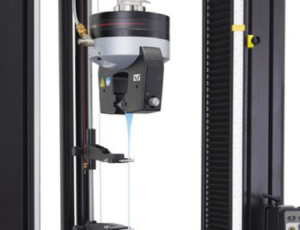Elastomer testing industry
by Dan Caesar, Instron
As part of their obligation to the customer, rubber manufacturers obtain and provide the fundamental material properties of all the raw materials they produce. These baseline properties generally include the hardness, tensile strength and elongation at break of each material, all of which are useful in quality control environments and when comparing elastomers to one another in a research and development setting. However, these baseline properties are not representative of how the rubber will ultimately perform when used by its consumers. Rubber often gets beaten up during its lifetime: It can be subjected to extreme hot and cold temperatures and submersed in various fluids. Because rubber is an elastomer, many of its applications involve it being stretched, compressed and torqued. The material produced must be able to withstand these conditions and continue to perform its intended function.
Global test standards published by organizations such as ASTM International or ISO include methods to characterize the fundamental properties of materials, as well as more application specific properties. ASTM D412, one of the more elementary elastomer tests, is a widely used test standard for determining the tensile properties of all thermosetting and thermoplastic elastomers, no matter their intended use. ASTM D412 measures two of the three fundamental properties mentioned above: tensile strength and elongation at break.
Complexity arises when one considers that ASTM D412 is just one of 344 test standards that ASTM International publishes to characterize rubber. In the “Significance and Use” section of ASTM D412, the standard states a disclaimer of sorts:
All materials and products covered by these test methods must withstand tensile forces for adequate performance in certain applications. These test methods allow for the measurement of such tensile properties. However, tensile properties alone may not directly relate to the total end use performance of the product because of the wide range of potential performance requirements in actual use.

